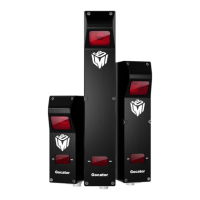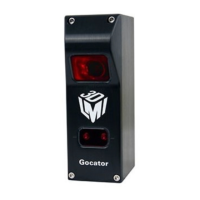Gocator Line Profile Sensors: User Manual
Development Kits • 666
For Windows users, code examples for C, C#, and VB.NET are provided in the SDK package.
For more information about programming with the Gocator SDK, refer to the class reference and sample
programs included in the Gocator SDK.
Setup and Locations
Class Reference
The full GoSDKclass reference is found by accessing the following file:
14400-4.x.x.xx_SOFTWARE_GO_SDK\GO_SDK\doc\GoSdk\Gocator_2x00\GoSdk.html
Examples
Examples showing how to perform various operations are provided, each one targeting a specific area.
For Visual Studio, the examples can be found in solution files specific to different versions of Visual
Studio. For example, GoSdk-2017.sln is for use with Visual Studio 2017. A make file for Linux systems is
also provided.
To compile the examples in Visual Studio, you may be need to retarget the solution to the
installed Windows SDK version. You can do this through the Retarget solution option in the
solution context menu.
To run the GoSDK examples, make sure the required DLLs are copied beside the executable. In most
cases only GoSDK.dll and kApi.dll are required, but with .NET and the accelerator additional DLLs are
needed. Please refer to the SDK samples to see which DLLs are required.
Example Project Environment Variable
All GoSDK example projects use the environment variable GO_SDK_4. The environment variable should
point to the GO_SDK directory, for example, C:\14400-4.0.9.156_SOFTWARE_GO_SDK\GO_SDK.
Header Files
Header files are referenced with GoSdk as the source directory, for example: #include
<GoSdk/GoSdk.h>. The SDK header files also reference files from the kApi directory.
FunctionalHierarchy of Classes
This section describes the functional hierarchy of the classes in the Gocator 4.x SDK ("GoSDK"). In the
following diagram, classes higher in the hierarchy often provide resources for classes lower in the
hierarchy, and for this reason should be instantiated earlier in a client application.

